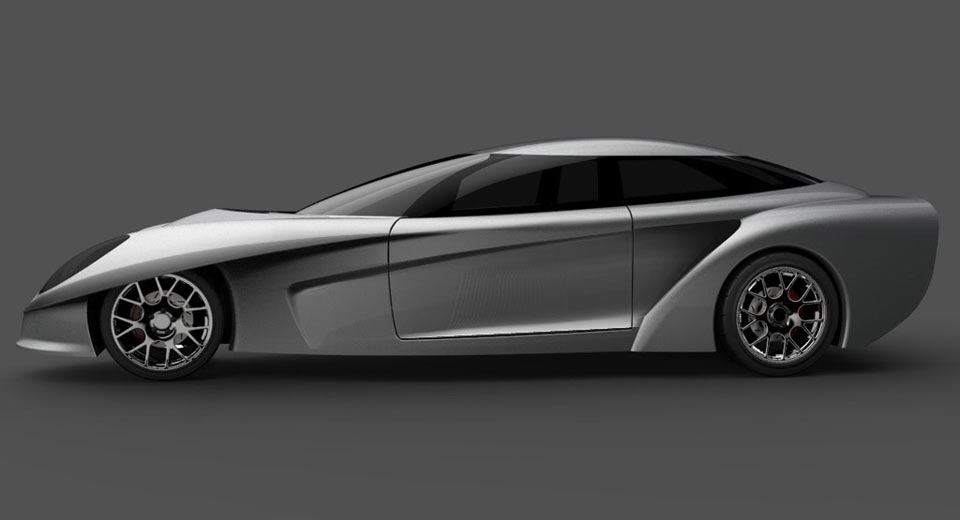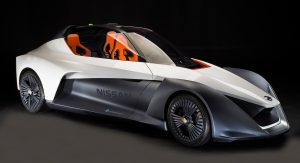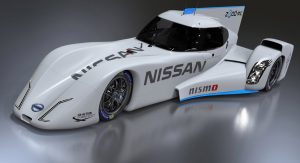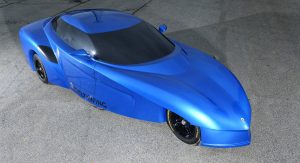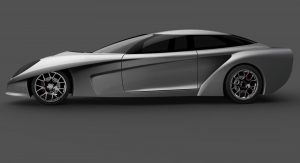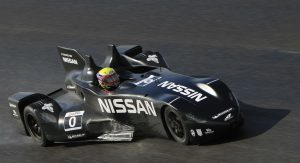See this oddly shaped vehicle? It’s our best look yet at the forthcoming DeltaWing GT. It was just released the other day by the DeltaWing Technology Group, and it’s timing is anything but random.
To understand what’s going on here, you have to go back to 2009 when a bunch of established but independent racing outfits got together to propose a radical new design for the IndyCar Series. The oddball shape put two wheels spaced close together at the end of a narrow nose, with the rear wheels space further apart.
The design was ultimately rejected, but drew a lot of attention. So the forces behind it redesigned the vehicle to compete at Le Mans. With backing from Nissan, the team won the experimental Garage 56 slot on the grid and competed in 2012, keeping pace with the LMP2 entrants before an unfortunate collision took it out of the race.
It’s been competing off and on in the years since, proving the concept has merit. But along the way, Nissan and the DeltaWing team went their separate ways. The Japanese automaker came up with some designs of its own along similar lines, taking the form of the ZEOD RC racer and the BladeGlider concept.
Nissan recently brought the BladeGlider back with a new concept, but DeltaWing Technology chairman Don Panoz has a thing or two to say about it. “As I’ve said all along, we have the exclusive ownership of the DeltaWing™ architecture and its intellectual property, not Nissan nor anyone else,” said Panoz. “Here’s what Nissan doesn’t have: the DeltaWing IP, the world’s most power-dense electric motor from DHX Automotive, or an operational DeltaWing race car that’s been competing in motorsports for the past five years.”
Panoz and his associates are working on a road-going version of the DeltaWing design, and that’s what we’re looking at here. They may either try to bring it to market (as Panoz has done with his own sports cars) or license it to a more established manufacturer. That could be Nissan, if the two can reconcile their differences and come back together.



